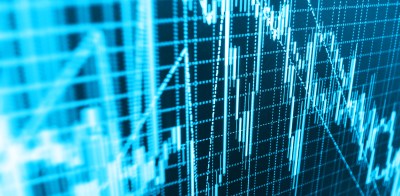Data as of October 31, 2022, unless otherwise noted.
Performance (total returns)
| Benchmarks | October 2022 | YTD |
| Bloomberg U.S. Aggregate Bond Index (Bloomberg Agg) | -1.30% | -15.72% |
| ICE BofAML U.S. High Yield Index (HY Bonds) | 2.85% | -12.19% |
| S&P/LSTA Leveraged Loan Index (Senior Secured Loans) | 1.03% | -2.25% |
Performance data quoted represents past performance and is no guarantee of future results. An investment cannot be made directly in an index.
Credit markets rallied in October:
Markets broadly rallied in October amid better-than-feared Q3 earnings results, a supportive technical backdrop and hopes of an imminent Fed pivot. Equities returned 8.1% while high yield bonds gained 2.85% and senior secured loans were up 1.03%. Despite this broad-based rally, the lowest-rated CCC bonds and loans lagged their higher-rated peers, indicating concerns over economic growth and recession risk remain at the fore. The divergence in performance between higher and lower-rated assets has been especially apparent in the loan market this year. The Index is down -2.25% while CCC loans have lost -11%. This compares to the high yield market, which has seen BB bonds outperform CCC bonds by only 384 basis points year to date. Treasury yields continued to drive volatility in duration sensitive core fixed income assets. The 10-year U.S. Treasury yield rose for much of the month, reaching 4.24%, its highest level since 2007, before ending the month at 4.04%. The Bloomberg Aggregate Bond index lost -1.30% and is now down nearly 16% year to date. The pace of credit market issuance remained anemic, with just $5.1 billion of high yield bonds and $6.5 billion of loans issued last month. On a year-over-year basis, high yield bond issuance is down 78% compared to the same period in 2021, while loan issuance is 71% lower. Despite this dearth of new issuance, retail inflows into high yield bond funds provided a relatively supportive technical backdrop. This is just the second monthly inflow for the asset class this year. Investors continued to shun the loan market, which saw its sixth consecutive monthly outflow in October. There was no default or distressed activity in October for the first time since October 2018. On a trailing 12-month basis, the high yield bond and senior secured loan default rates ended the month at 1.59% and 1.58%, respectively.
Credit price declines offer attractive risk/return potential: Even after last month’s market rally, high yield bond prices remain down sharply on a year-to-date basis. As of the end of October, the average par weighted price of the High Yield Index was 85.69, and it is estimated that over 40% of the market trades at a price below March 2020 lows. These depressed prices have improved convexity in the high yield market. Further, favorable trends in recovery rates have, in our view, improved the overall potential risk versus return profile for credit investors. Over the last 12 months, high yield bondholders have recovered roughly 56 cents on the dollar in the event of a default, while senior secured bondholders are recovering nearly 77 cents on the dollar. We believe the potential upside is likely greater than the downside, given low starting prices and these favorable recovery stats.
Key takeaways
- Credit rallied last month alongside broader markets. High yield rose 2.85% while floating rate senior secured loans gained 1.03%.
- Rising long term interest rates pressured the duration sensitive Bloomberg Agg, which fell -1.30%, bringing year to date declines to -15.72%.
- Low starting prices and high recovery rates have, in our view, improved convexity in the high yield market.

